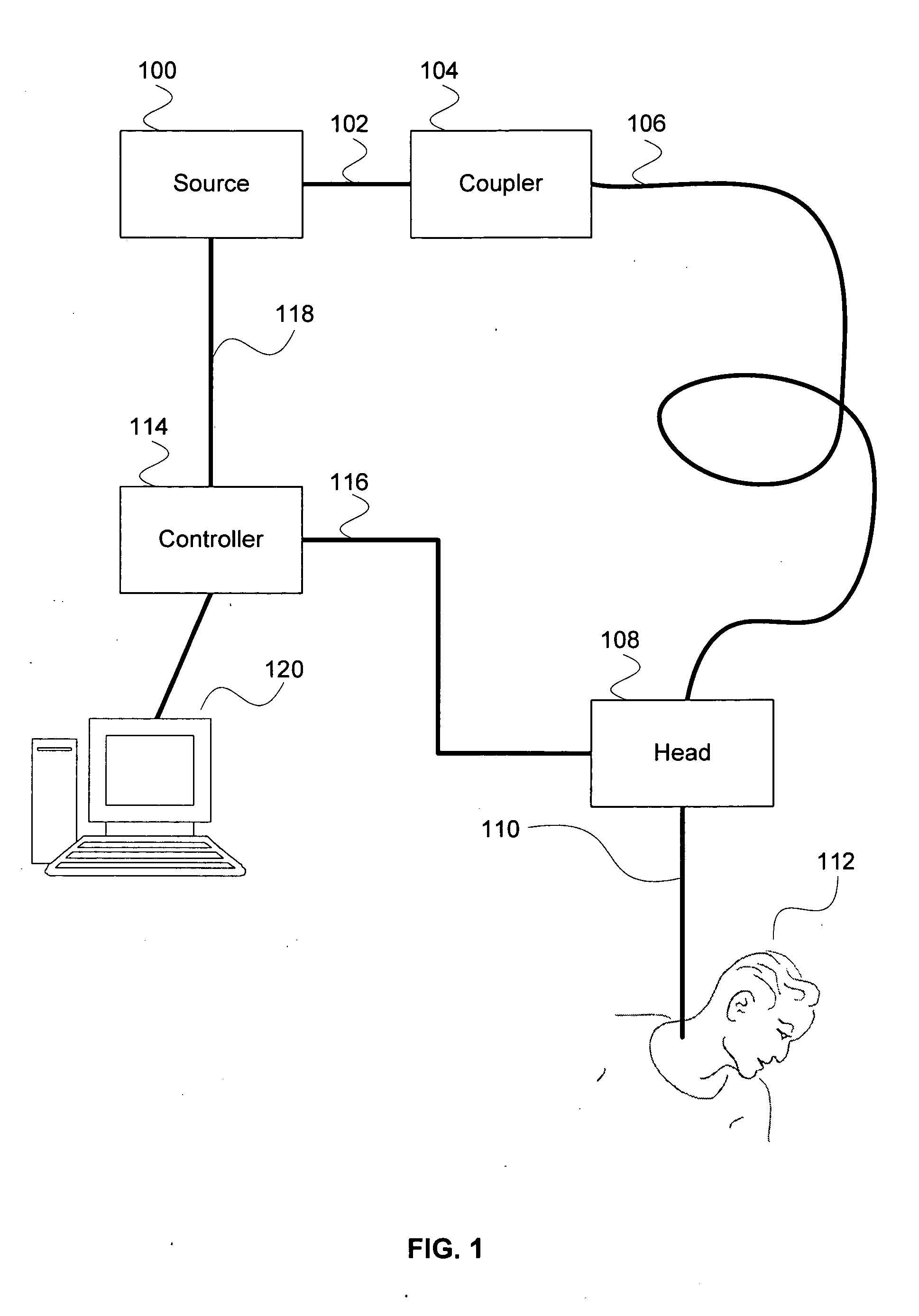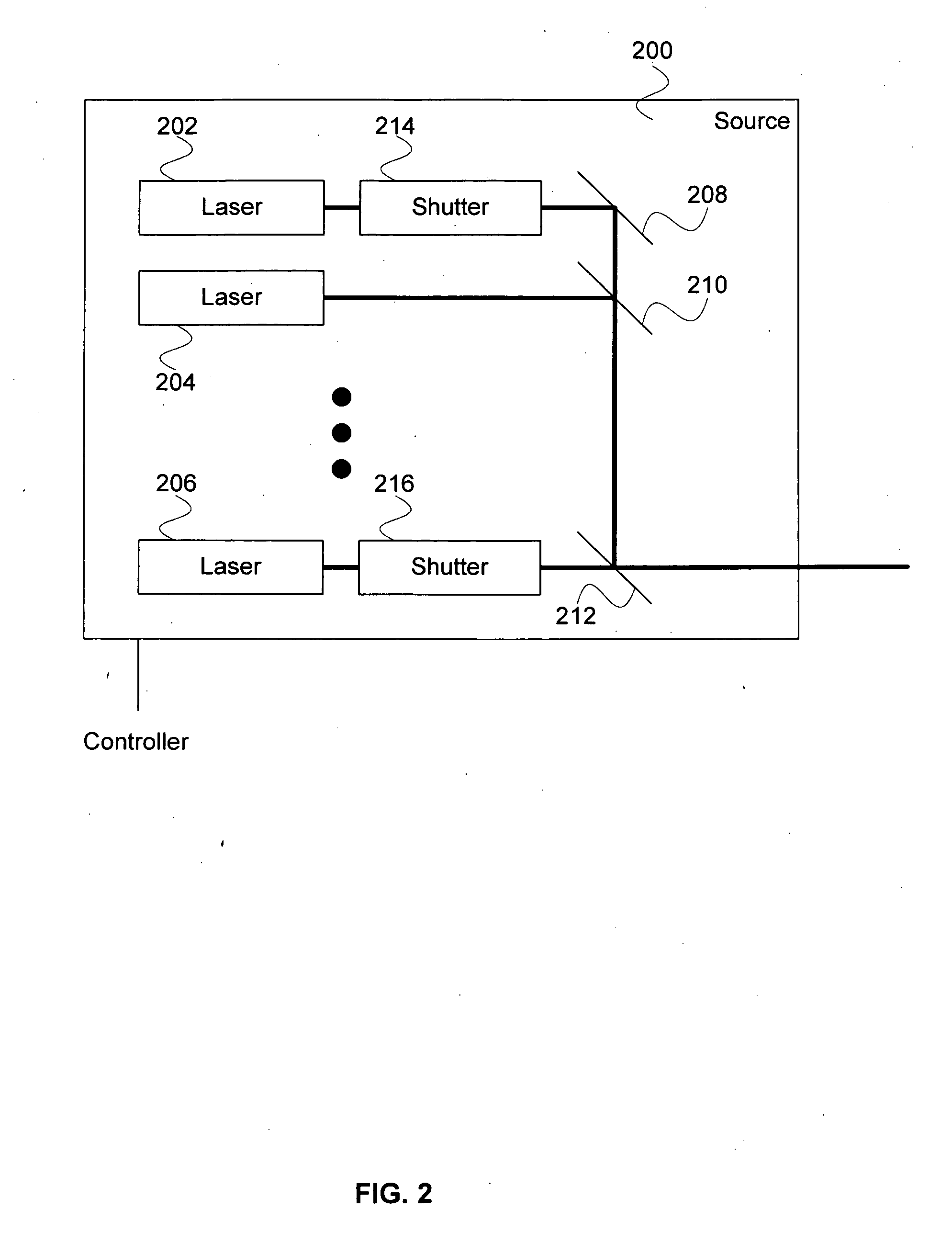Cancer treatment using selective photo-apoptosis
a technology of selective photoapoptosis and cancer, applied in the field of cancer treatment using selective photoapoptosis, can solve problems such as producing one or more undesired effects
- Summary
- Abstract
- Description
- Claims
- Application Information
AI Technical Summary
Benefits of technology
Problems solved by technology
Method used
Image
Examples
Embodiment Construction
b class="d_n">[0011]FIG. 6 is a diagram illustrating an embodiment of a scan pattern.
[0012]FIG. 7 illustrates example spectra of a target and a host in one embodiment.
[0013]FIGS. 8-11 are tables illustrating embodiments of wavelengths to target for treatment.
[0014]FIG. 12 is a flow diagram illustrating an embodiment of a process for a system for selective photo-apoptosis cancer treatment.
[0015]FIG. 13 is a flow diagram illustrating an embodiment of a process for a system for selective photo-apoptosis cancer treatment.
[0016]FIG. 14 is a flow diagram illustrating an embodiment of a process for a system for selective photo-apoptosis cancer treatment.
[0017]FIG. 15 is a flow diagram illustrating an embodiment of a process for determining a selective photo-apoptosis treatment.
[0018]FIGS. 16A and 16B are flow diagrams illustrating embodiments of processes for a system for selective photo-apoptosis cancer treatment.
[0019]FIG. 17 is a flow diagram illustrating an embodiment of a process for ...
PUM
 Login to View More
Login to View More Abstract
Description
Claims
Application Information
 Login to View More
Login to View More - R&D
- Intellectual Property
- Life Sciences
- Materials
- Tech Scout
- Unparalleled Data Quality
- Higher Quality Content
- 60% Fewer Hallucinations
Browse by: Latest US Patents, China's latest patents, Technical Efficacy Thesaurus, Application Domain, Technology Topic, Popular Technical Reports.
© 2025 PatSnap. All rights reserved.Legal|Privacy policy|Modern Slavery Act Transparency Statement|Sitemap|About US| Contact US: help@patsnap.com



